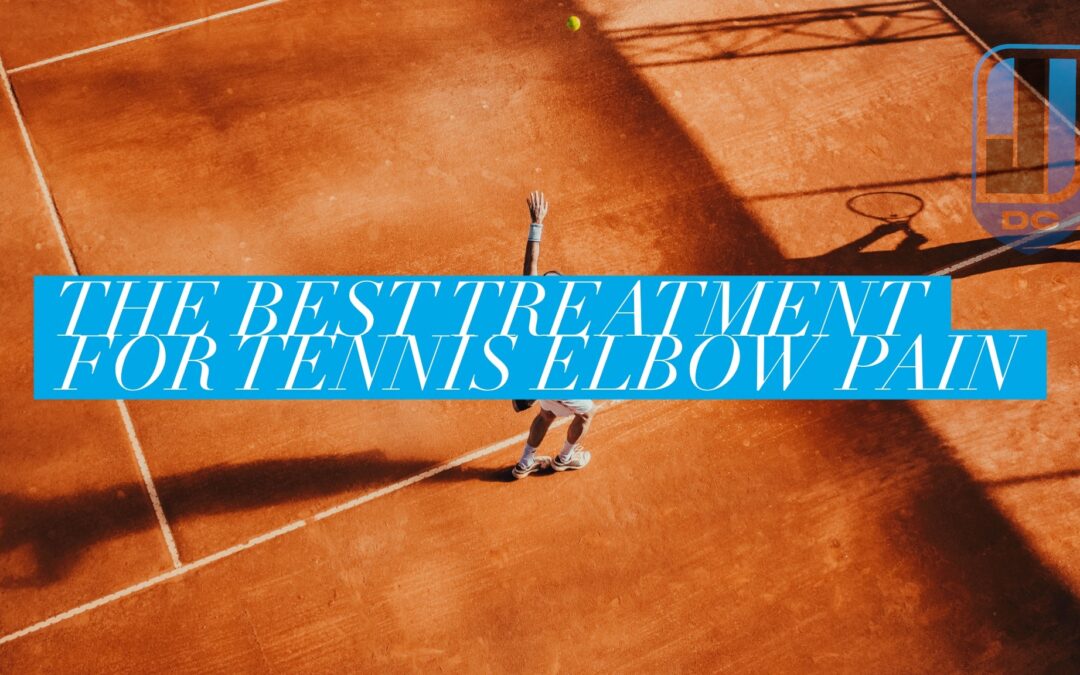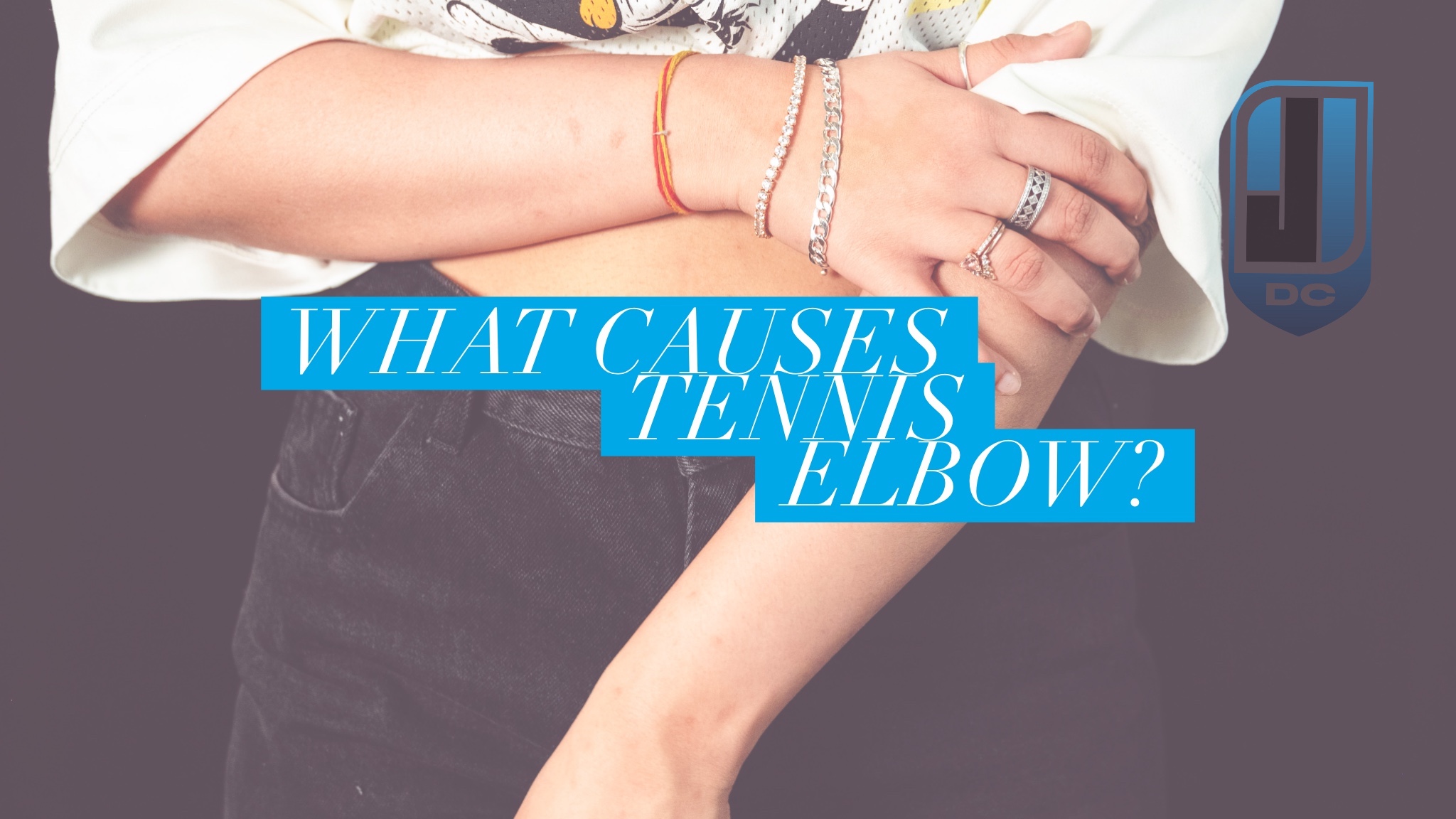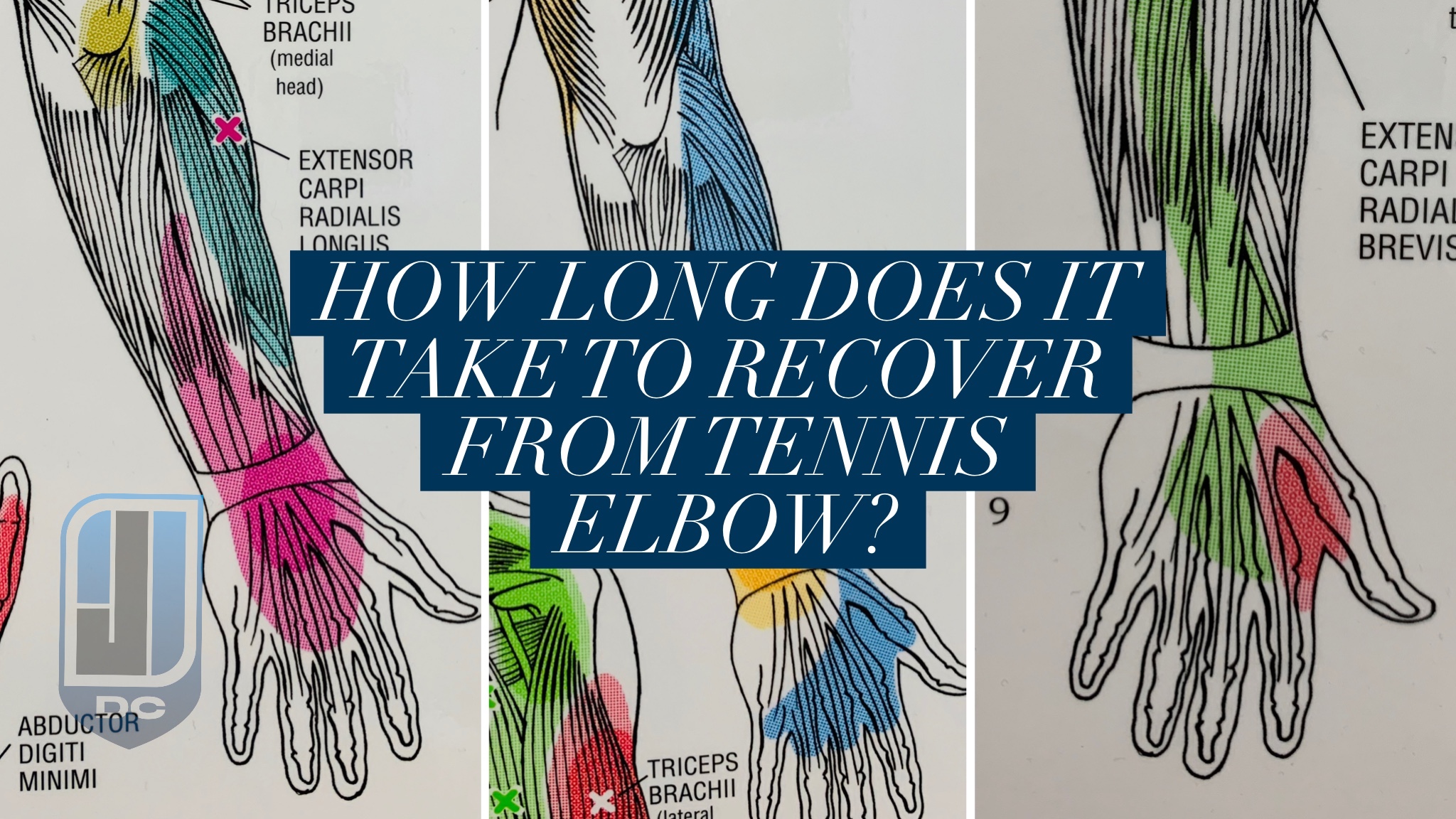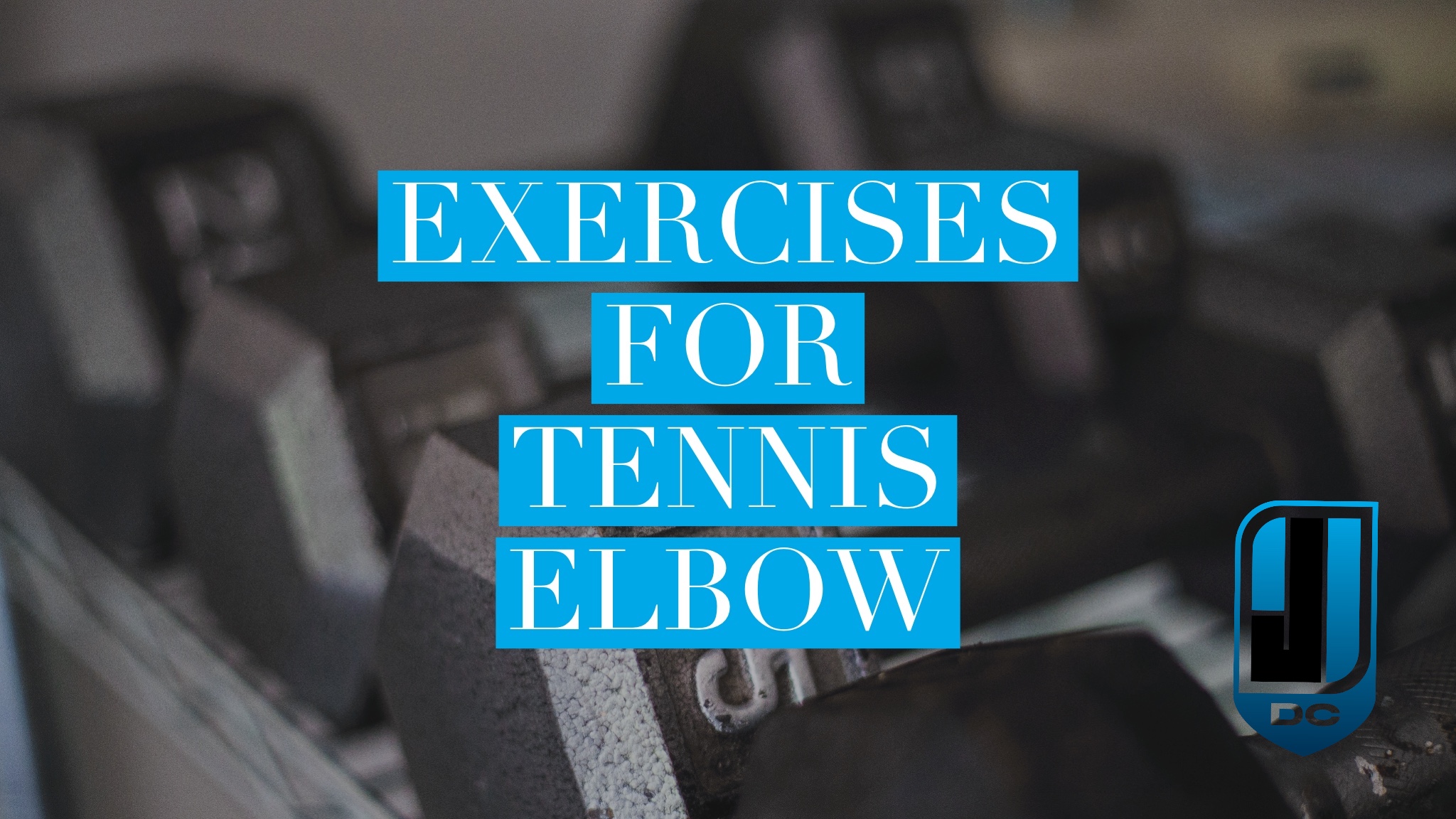If you’re suffering from tennis elbow, you’re undoubtedly looking for the best treatment for tennis elbow pain. It can be frustrating look at the HUGE variety of treatments, medications, braces, and topicals and not know what to do. That’s why I’m here, to educate you on what the available treatments for tennis elbow are. As a bonus, I’m going to fill you in on what the best treatment for tennis elbow is (and how research agrees!)
If you’re just finding this series, make sure you read my previous two blogs. In them, I try to answer all your questions about what tennis elbow is and what’s actually causing your elbow pain. You can find those two below by clicking on the pictures.
- How to know if you have tennis elbow?
- Where is tennis elbow pain?
- Can you have tennis elbow if you don’t play tennis?
- What movements cause tennis elbow?
- Is tennis elbow an overuse injury?
- How long does it take to recover from tennis elbow?
- Which muscles are damaged in tennis elbow?
- What causes tennis elbow pain?
- Elbow conditions similar to tennis elbow
Treatments for Tennis Elbow Pain
If you’re suffering with pain on the outside of your elbow, the good news is there are plenty of treatments for tennis elbow pain. Treatments are essentially broken down into three categories that include home treatments, rehabilitation, and medical treatments.
Home Treatments for Tennis Elbow Pain
Home treatments to relieve tennis elbow pain are a great place to start. If you’re reading this you’ve likely tried a few of them already, but if not here are some recommended home treatments for pain in outside of the elbow:
- NSAIDs – Over the counter anti-inflammatories like Ibuprofen or Aleve may provide some temporary relief from tennis elbow symptoms. They’re typically not a long-term solution or going to help the area heal.
- Tennis Elbow Brace – A tennis elbow brace like a counterstain brace can help relieve elbow pain. They also create a new anchor point for the muscle so that you don’t keep straining the muscle tendon.
- Activity Modification – It can be helpful to modify activities that irritate your elbow. Either reduce how often you’re doing them or do them differently. This can be difficult if you get pain in the outside of your elbow while working on a computer.
- Ice and/or Heat – Ice and heat can provide temporary relief for tennis elbow. Heat can help increase blood flow to the area. This is helpful since the tendon is poorly supplied with blood. Ice won’t help decrease the inflammation because tennis elbow isn’t a condition of inflammation. These treatments are generally safe, but won’t usually heal tennis elbow by themselves.
- Home Stretches and Exercises – Home stretches and exercises for tennis elbow are really important. You can try a few tennis elbow exercises on your own using resources like YouTube. Home exercises are better, however, when you have someone who can direct you on which ones to do and when.
- Self Massage – Self-massaging the outside of your elbow can help encourage new tissue formation and also provide some short-term relief.
Rehabilitation for Tennis Elbow
Rehabilitation for tennis elbow is important in order to recover from this condition and get back to your normal activities pain-free. A rehab-focused chiropractor is the best doctor to see for most cases of tennis elbow because he or she can provide a variety of rehab for tennis elbow including:
- Rehab Exercises and Stretches – Rehab exercises and stretches are very effective when guided by an experienced provider. It’s important to get a rehab plan, because the progression of exercises is important. If you’re doing a strengthening exercise at the wrong time or the wrong way it could make your discomfort worse.
- Chiropractic Adjustments – Chiropractic adjustments are joint manipulations and joint mobilizations that can restore normal movement in your shoulder, elbow, and wrist. These may be an underlying cause of your elbow pain.
- Instrument Assisted Soft Tissue Mobilization (IASTM) – This is a fancy name for soft-tissue treatment. Treating the muscles in the forearm can promote blood flow, reduce pain, and encourage healing.
- Dry Needling/Acupuncture – These treatments can be very effective. Needling can stimulate a healing response, loosen tight muscles in the area, and reduce painful knots called trigger points.
- Stim, Shockwave, and Ultrasound – These are ancillary therapies that reduce pain, relieve muscle tightness, warm up the elbow, and improve blood flow to your elbow.
- Kinesio Tape – Kinesio tape helps lift up the tissue and promote better blood and lymph flow to the area.
Medical Treatments for Tennis Elbow
Medical treatments for tennis elbow are more invasive and should usually be reserved unless other treatments fail. Here are the common medical treatments used to treat tennis elbow:
- Prescription anti-inflammatory medications – These medications can help reduce tennis elbow pain but are a temporary fix, since they don’t heal the problem.
- Steroid Injections – Steroid injections reduce inflammation in the elbow. They can provide relief but don’t have good results for long-term recovery.
- Platelet Rich Plasma (PRP) Injections – This is a treatment where PRP is injected in the problem area in an effort to jumpstart healing that’s not happening.
- Surgery – Sometimes, surgery is necessary if there’s a partial or complete tear of the common extensor tendon in the elbow. These are more advanced cases, and require an MRI beforehand.
The Best Treatment for Tennis Elbow Pain Relief
The best treatment for tennis elbow pain relief is the treatment that works. I know that’s not eye-opening, but it’s important to remember because each case of tennis elbow is unique. You don’t know what’s going to work for you until you try it. What we can do to find the best treatment is take a look at the research and show what it tells us.
Evidence for Conservative Care as the Best Treatment
The evidence for conservative care as the best treatment for more tennis elbow cases is pretty strong. Remember, conservative care means chiropractic care and rehab. Want some proof that seeing a chiropractor for tennis elbow is helpful? Here it is!
- Chiropractic adjustments to treat tennis elbow show decreased pain, improved grip strength, and decreased disability.
- Moderate quality evidence supports chiropractic adjustments for treatment of tennis elbow.
- A study showed that IASTM for 1 month resolved 57% of tennis elbow cases and 78% after two months.
- Evidence supports “slow progressive loading” (a progressive strengthening exercise program) and not rest.
- Acupuncture and dry needling treatments show improvement in tennis elbow pain.
I could go on, but the evidence is fairly clear. Rehabilitation is the best treatment for tennis elbow pain relief. Rehab also keeps the complaint from coming back by addressing the cause of tennis elbow and not just treating your pain. As a bonus, research also shows that patients respond well with 12 weeks of conservative (rehab) treatments that chiropractors provide.
Another noteworthy stat from research is that only 11% of tennis elbow cases are estimated to need surgery and should only be considered after 6 months of conservative care.
Again, your tennis elbow pain is unique just like everyone else’s. It requires focused care to figure out what works the best for you. I would encourage you to see a chiropractor for tennis elbow treatment and get on the road to recovery.
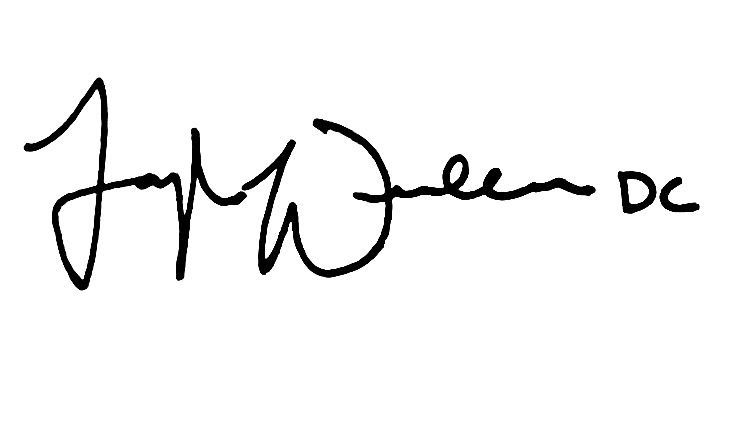
Jason Williams DC is a licensed Doctor of Chiropractic with Physical Therapy Modality and Acupuncture privileges. He is a chiropractor in Dumfries, VA at Sentara Therapy Center. Dr. Williams’ clinical expertise is in the evaluation, treatment, and rehabilitation of neuro-musculoskeletal conditions. Specific focuses include spinal, extremity, and sports-related complaints. He brings a patient-first attitude to his treatments and is a proponent of evidence-based and integrative care. See more content and his contact info here.
The opinions and views are mine personally, and do not necessarily reflect the views of others in the profession, my employer, or organizations that I belong to.

